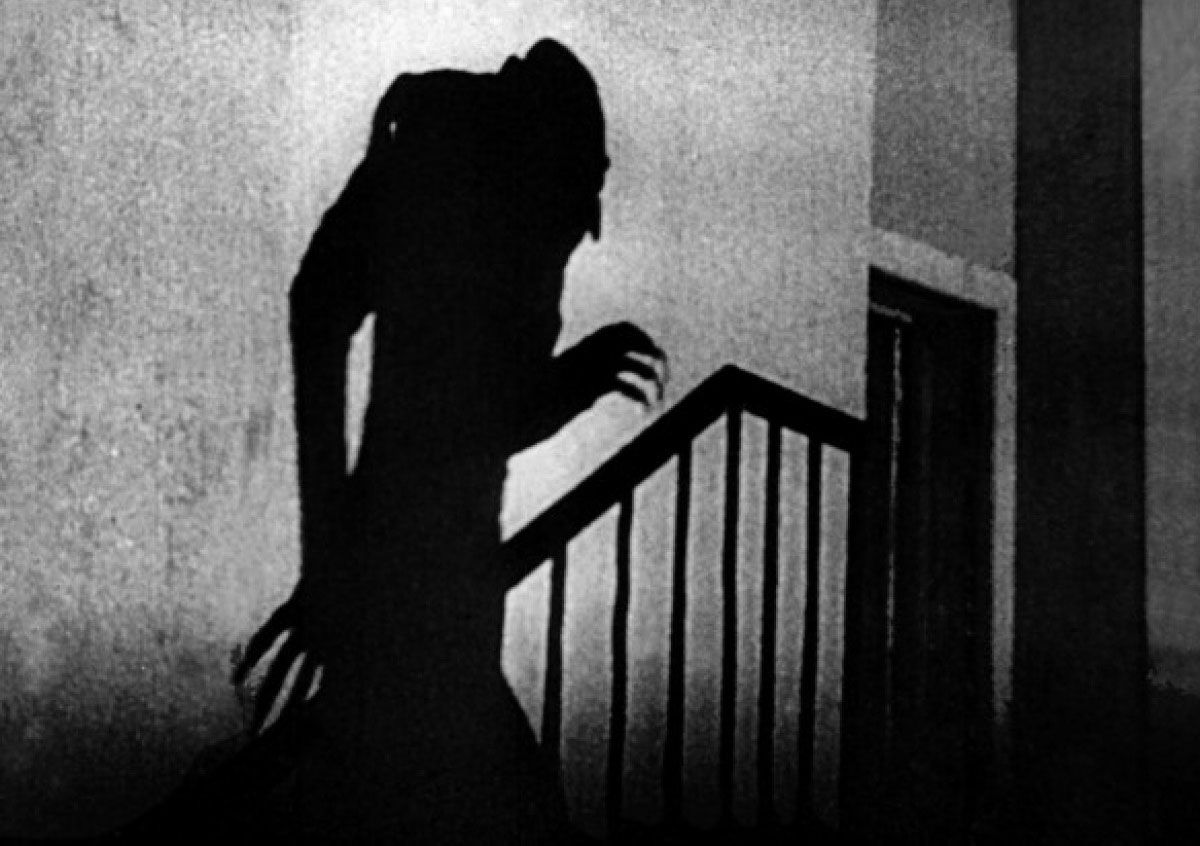James: I avoid reconstructing period scores whenever possible with my preference being to perform them completely unchanged. The reconstruction process for Nosferatu is required, of course, because only 11 minutes of the original 1922 score by Hans Erdmann have survived. So, I play my carefully prepared transcriptions and organ arrangements based on whatever historical material remains. I also conduct meticulous rehearsals to ensure precise cue alignment, reserving my improvisational techniques as enhancement rather than necessity.
Edify: Nosferatu has been in your repertoire since its ’90s restoration. Do you remember the first time you watched it?
James: I first saw Nosferatu in Canada in 1987 when the first touring restoration of the film played in the nascent Toronto International Film Festival with Enno Patalas, a renowned film restorer, in attendance. I just happened to be performing in town that week when a festival representative called me at my hotel to tell me that the originally assigned music score improviser had suddenly backed out of performing the day it was supposed to screen. Apparently, it was too challenging for him.
Because I’d never seen the film myself, I asked if there was time to screen it for me — but there wasn’t even time for that. I’d have to score the film at first sight. After the show, Enno hired me on the spot to join his restored Nosferatu tour, which led to working together on many subsequent restorations and performance presentations of eminent classic German silent films.
Edify: What pitfalls catch less experienced players?
James: The biggest pitfalls are a lack of improvisational skill at the organ and a shallow understanding of historical film-music composition. Those were the same challenges that caused that musician in Toronto to withdraw.
Edify: Silent films rely so much on exaggerated facial expressions and gestures to tell the story. As a musician, how do you respond to that visually expressive acting?
James: When performing existing published scores, I follow every indication in the manuscript exactly as written by the composer, editor or publisher. For everything else, I try to perform in the same manner as the period-original musicians, relying on historical trade journals, solo musician textbooks, how-to manuals and presentation guides published throughout the silent film era.
